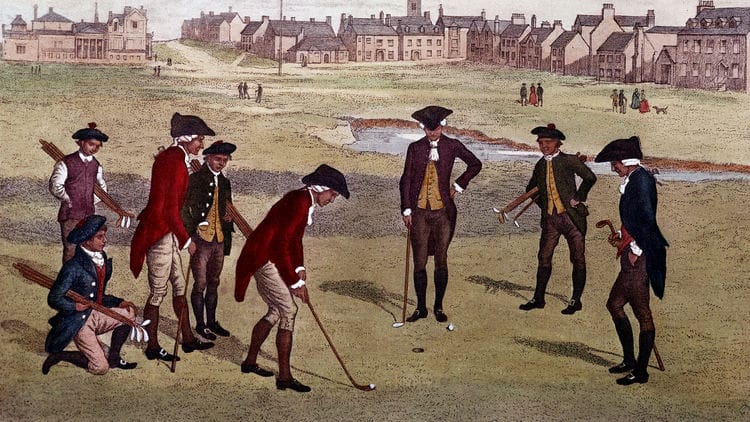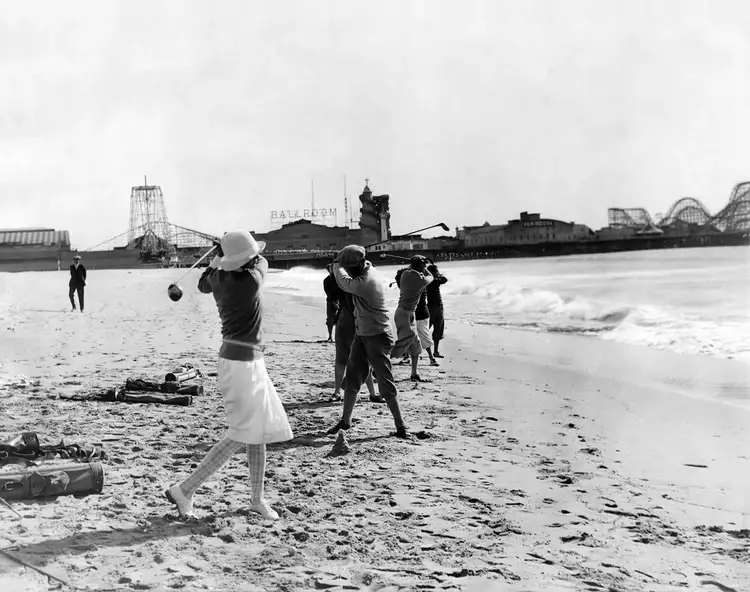SPORT & LIFESTYLE NEWS
How Golf Was Invented: A Brief History
Golf, a sport celebrated for its precision and grace, has a history that stretches back centuries. Understanding how golf was invented requires us to explore “How golf was invented?“. In this article, AlibayTrendy Store delve into the origins of golf, shedding light on the journey that has made it the beloved game it is today.
How Golf Was Invented?
The exact origin of golf is a subject that has intrigued historians and scholars for years. While many trace golf’s roots to Scotland, there is considerable evidence that games resembling golf were played across different cultures long before it took on its modern form.

In ancient Rome, a game known as “paganica” was popular among soldiers and civilians alike. It involved striking a leather-stuffed ball with a bent or curved stick, similar to how we play golf today. The Roman legions likely spread this game throughout Europe, where it may have influenced other sports.
Meanwhile, in ancient China, there was a game called “chuiwan” that appeared in historical texts from the Song Dynasty, dating back to the 10th century. Chuiwan, which translates to “hitting the small ball,” involved players hitting a ball with a wooden club toward a series of targets.
This game was played by the Chinese elite and is often depicted in artwork from that era, suggesting that it was an established pastime among the upper classes. While these ancient games share similarities with golf, it’s essential to recognize that golf’s development was influenced by a combination of these early activities and later innovations.
Scotland: The Birthplace of Modern Golf
Though various ancient cultures had games that resembled golf, Scotland is widely considered the birthplace of modern golf. The first recorded mention of golf in Scotland comes from 1457 when King James II issued a ban on golf and football, concerned that these activities were diverting attention from military archery practice.

Despite this ban, golf continued to thrive, becoming a popular pastime among Scottish nobles and commoners alike. It wasn’t long before the Scottish Parliament recognized the game’s appeal, eventually lifting the ban.
Golf in its early form in Scotland was relatively simple: players would use a stick-like club to hit a ball across fields and rough terrain toward a predetermined target, often a hole or marker. As the game grew in popularity, players began to establish rudimentary courses, with a clear starting point and a final destination.
By the late 17th century, the game’s rules and structure became more defined, with organized matches and designated golf courses becoming more common. This period marked a crucial transition from a loosely defined pastime to the structured sport that golf is today.
The Evolution of Golf Courses
The development of golf courses in Scotland was a pivotal moment in the evolution of the sport, shaping how the game would be played for centuries to come. Among these early courses, the most renowned is St. Andrews Links, often hailed as the “home of golf.” Established in the 16th century, St. Andrews set the standard for golf course design, introducing elements that are now considered essential to the game.

The layout of St. Andrews Links, with its wide fairways, challenging bunkers, and undulating greens, became the blueprint for golf courses around the world. It wasn’t just the physical layout that made St. Andrews influential, but also the spirit of the game it embodied.
The course was open to the public, fostering a sense of community and inclusivity that has persisted in golf culture. As the game grew in popularity, the design elements from St. Andrews, such as strategically placed hazards and distinctive landscapes, were incorporated into other courses, leading to a more consistent and engaging experience for players.
Spread of Golf Across the Globe
Golf’s journey from a regional Scottish pastime to a global phenomenon began in earnest during the 18th and 19th centuries. The British Empire’s expansion played a significant role in spreading the game, as British officials and military personnel took their love of golf with them to new territories.\

As a result, golf clubs and courses began to emerge in England, setting the stage for the sport’s international growth. The establishment of golf associations like The Royal and Ancient Golf Club of St. Andrews in 1754 was a critical step in standardizing the rules and fostering the sport’s spread across borders.
By the late 19th century, golf had crossed the Atlantic to North America, where it quickly gained popularity. The first American golf course, Oakhurst Links in West Virginia, was established in 1884, marking the beginning of a robust golf tradition in the United States.
Golf also made its way to Asia, with Japan and India becoming early adopters of the sport. As golf clubs and associations formed worldwide, the game became more organized, leading to international tournaments and competitions that further fueled its growth.
The standardization of rules and the creation of governing bodies ensured that golf maintained its unique identity while adapting to different cultures and landscapes, solidifying its place as a beloved global sport.
Golf has come a long way from ancient games to its modern form. The combination of skill, strategy, and camaraderie among golfers has made this sport a favorite pastime for many over the centuries. Whether you’re playing on the lush greens of Scotland or in bustling urban settings, golf always has a special appeal.
If you’re a golf enthusiast and want to express your style, check out the collection of Hawaiian Golf Shirts at AlibayTrendy Store. With unique designs and premium materials, these shirts will help you stand out on the golf course or anywhere else. Don’t miss out on this opportunity—visit AlibayTrendy Store and start shopping today!
